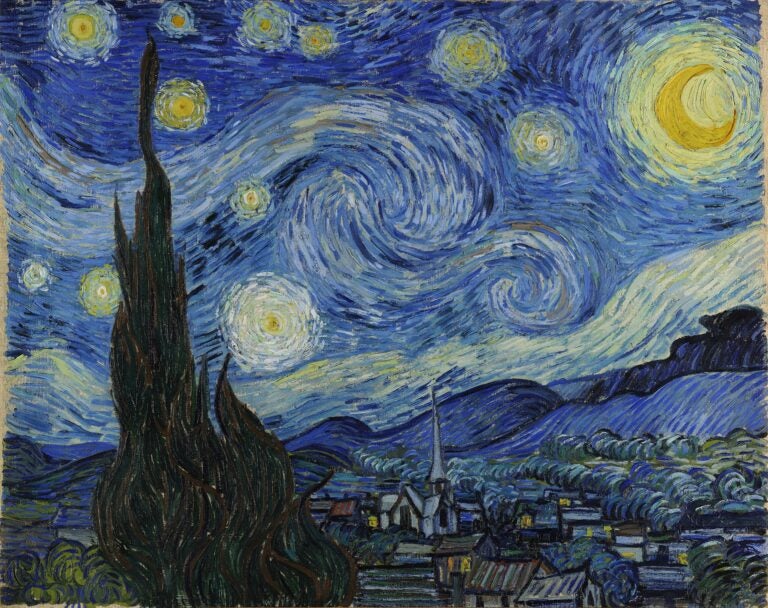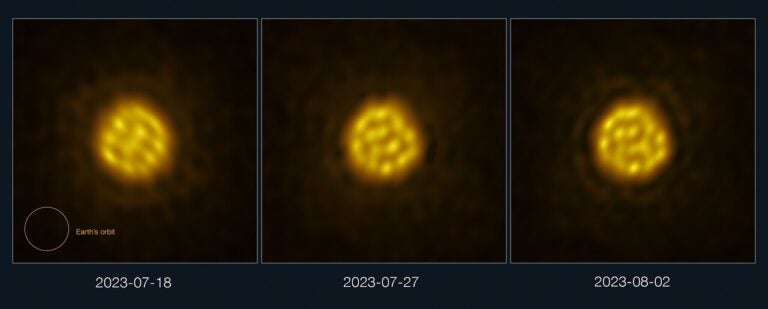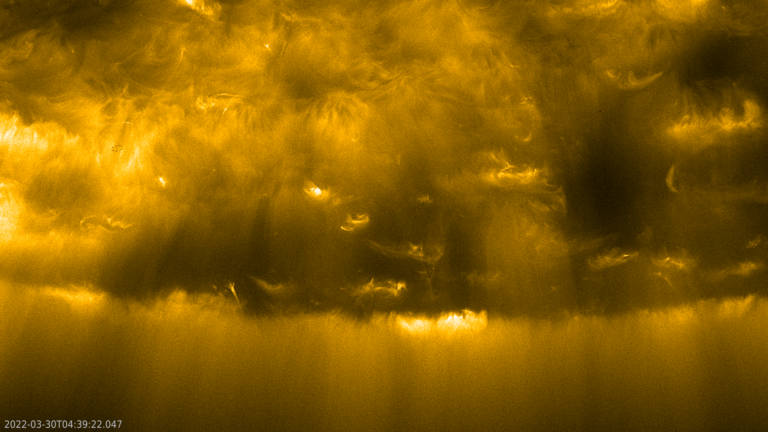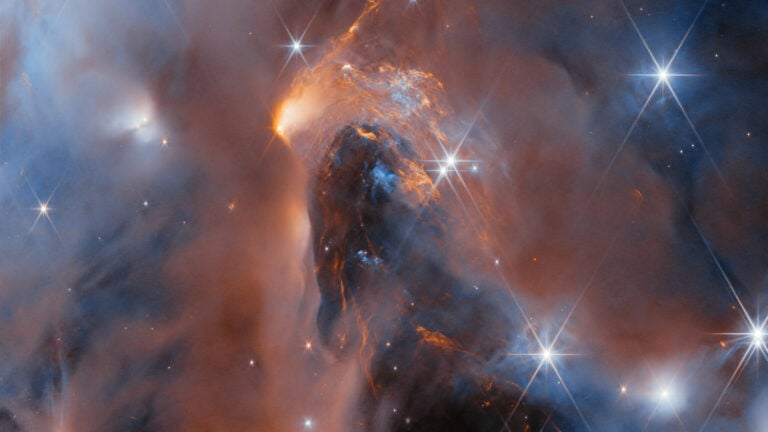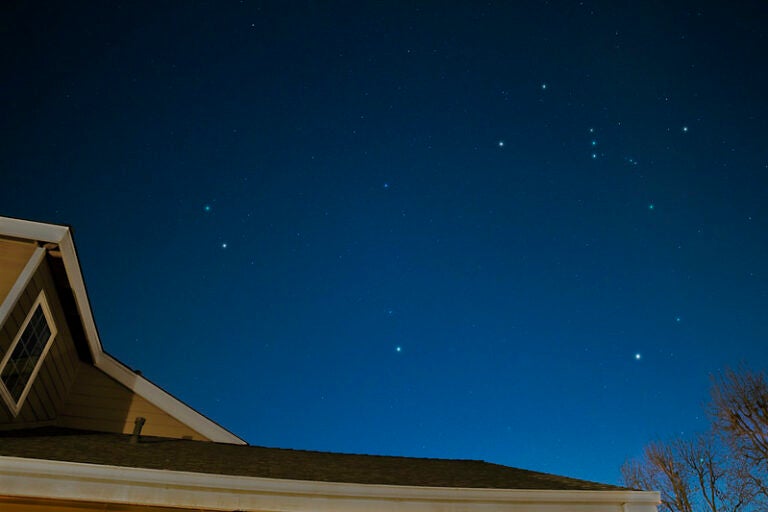A star’s temperature, chemical composition, and density are hidden within spectral lines. The different stellar classes — O, B, A, F, G, K, M, and recently added L and T — are characterized by temperature, color, and spectra. When astronomers spread starlight into a spectrum, they find discrete lines of color “missing.”
The strength of a spectral line depends both on how much of a particular element is in the star and on how easily that element can move to higher energy levels. (An atom’s electrons exist in defined energy states, or steps. Particular wavelengths of light must be absorbed for an electron to move up to the next excited state or emitted to fall back to the starting point, or ground.)
If a star is hot enough, and, therefore, energetic enough to excite hydrogen to its first “step,” then the atom is able to absorb and emit in the Balmer series — the visible-light spectral series. The commonly known Hydrogen-alpha (Hα) line — red light with a wavelength of 653.6 nanometers — is a transition between the second and first excited states.
When you compare spectra from different types of stars — O, B, A, F, G, K, M, L, T — you see weak, if any, hydrogen lines associated with both the hottest and coolest stars. If the star is too hot, the atom hits its energy limit, and the electron is ripped away, ionizing the atom. Hence, this energy limit is called the ionization energy. If a star is too cool, most hydrogen atoms will populate the ground state, and, thus, there will be few chances to make Hα. The magic temperature for the strongest Balmer series hydrogen lines sits around 10,000 kelvins, in the A-class range.
| Spectral type | Color | Temperature (Kelvin) |
Spectral lines |
| O | Blue | 28,000–50,000 | Ionized and neutral helium, weak hydrogen |
| B | Blue white | 10,000–28,000 | Neutral helium, hydrogen |
| A | White | 7,500–10,000 | Strong hydrogen, some ionized metals |
| F | White yellow | 6,000–7,500 | Weak hydrogen, ionized calcium and iron |
| G | Yellow | 5,000–6,000 | Weak hydrogen, neutral and ionized metals, especially calcium |
| K | Orange | 3,500–5,000 | Neutral metals, sodium, weak hydrogen |
| M | Red | 2,500–3,500 | Neutral metals, molecules, little hydrogen |
| L | Red-infrared | 1,300–2,500 | Alkalai metals, no hydrogen |
| T | Infrared | Less than 1,300 | Methane, water, neutral potassium |
A star’s atmosphere is similar to a cloud of different gases. As a result of decades of atomic physics research, astronomers know the spectral characteristics of each element. They can compare stellar and atomic spectra to determine the chemical composition of stars’ atmospheres.
This was precisely what Cecilia Payne-Gaposchkin did 80 years ago, within her 200-page thesis Stellar Atmospheres. She was a pioneer in decoding stellar spectra and was one of the first astronomers to bridge the gap between laboratory physics and the stars.



![Albireo (Beta [β] Cygni) is a classic example of a double star with contrasting colors.](https://www.astronomy.com/uploads/2024/08/Albireo.jpg)
